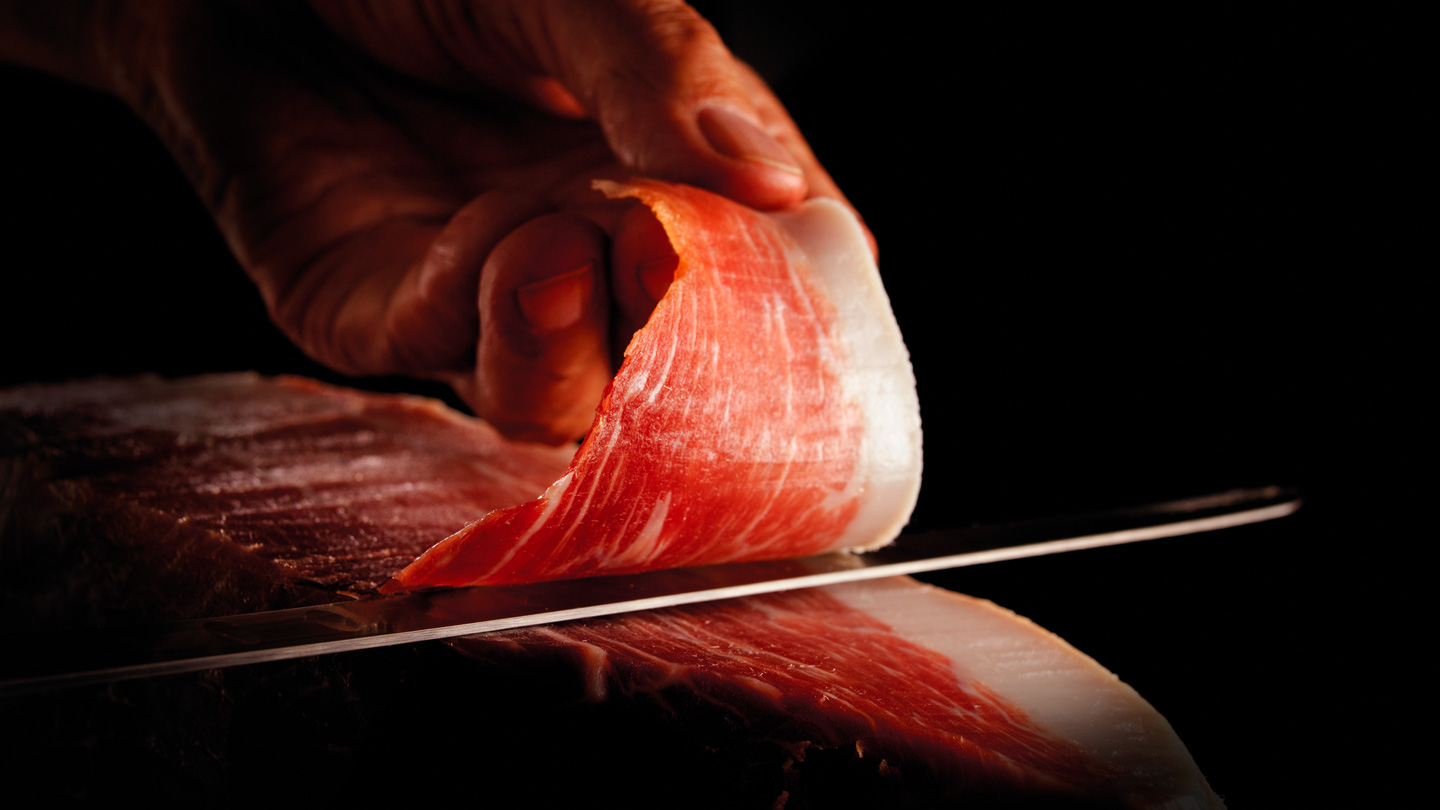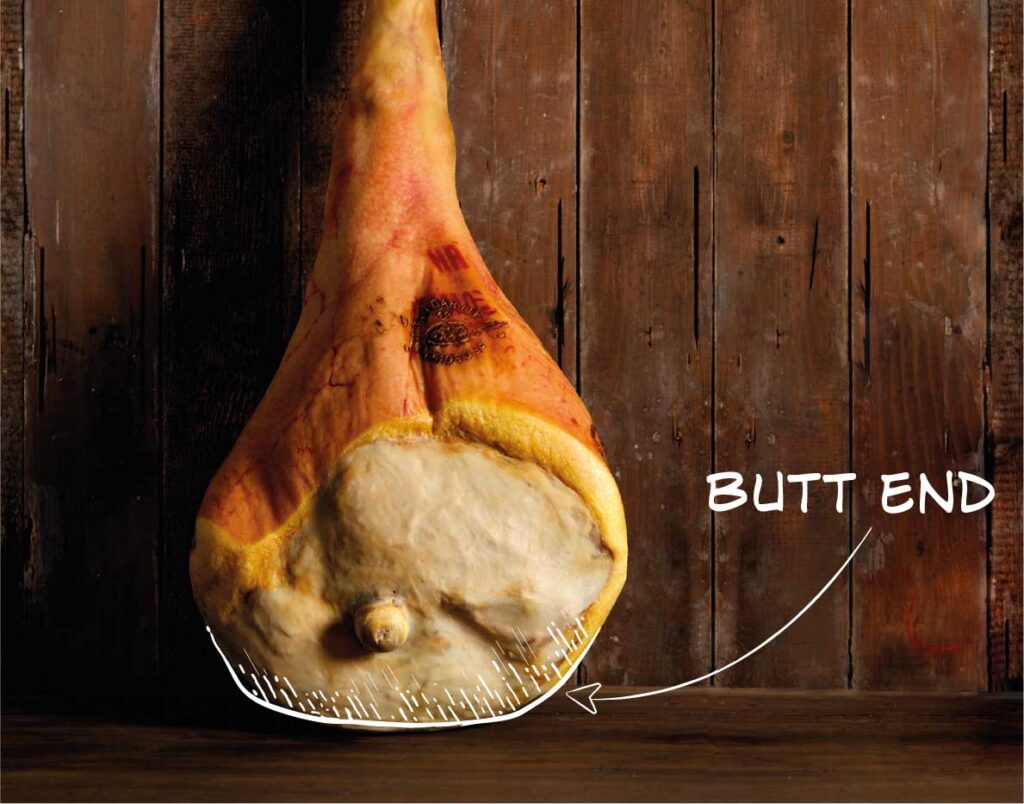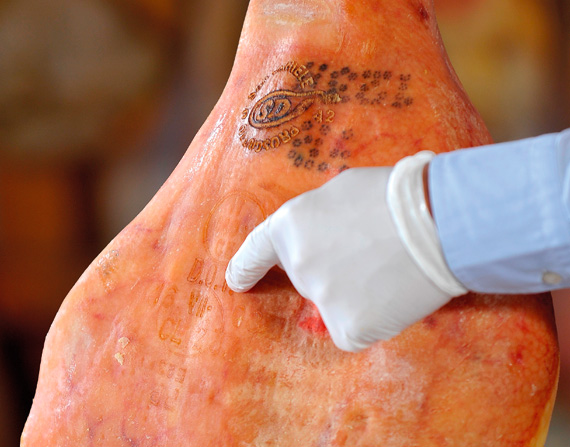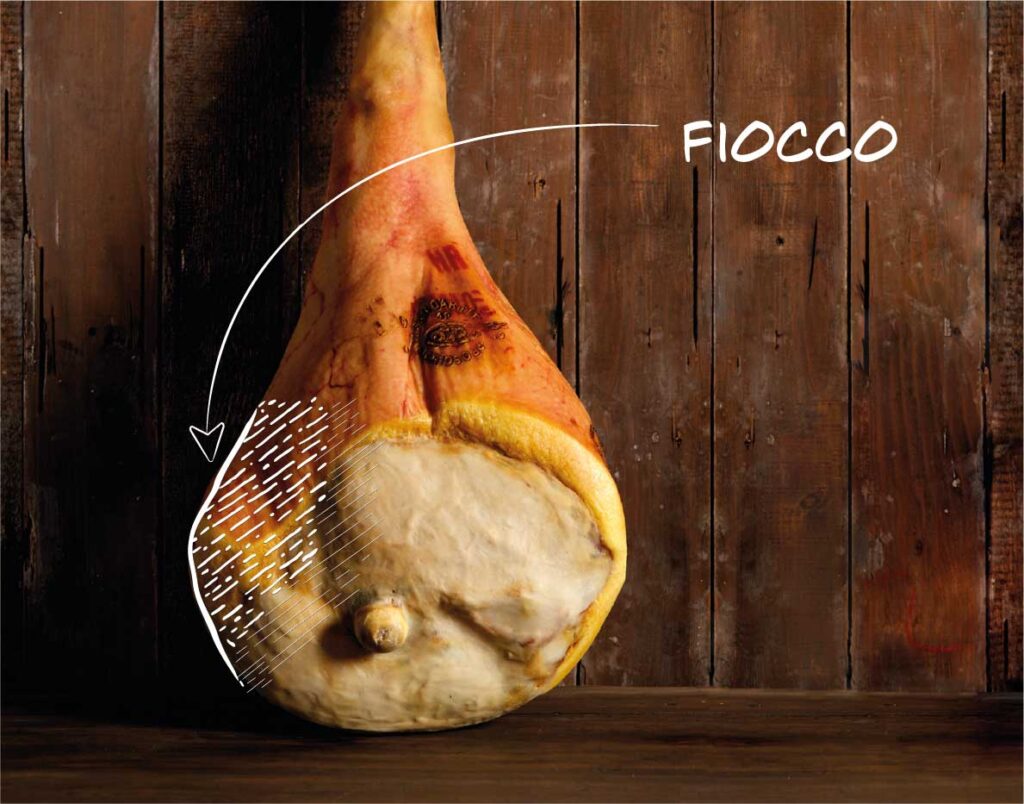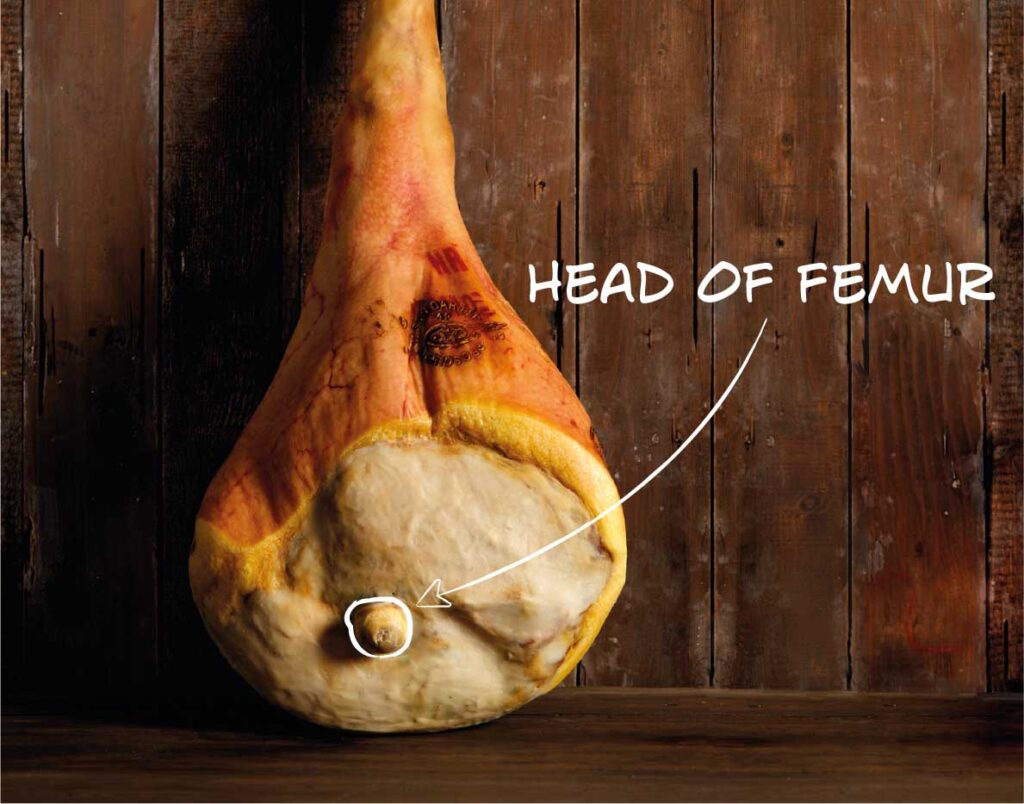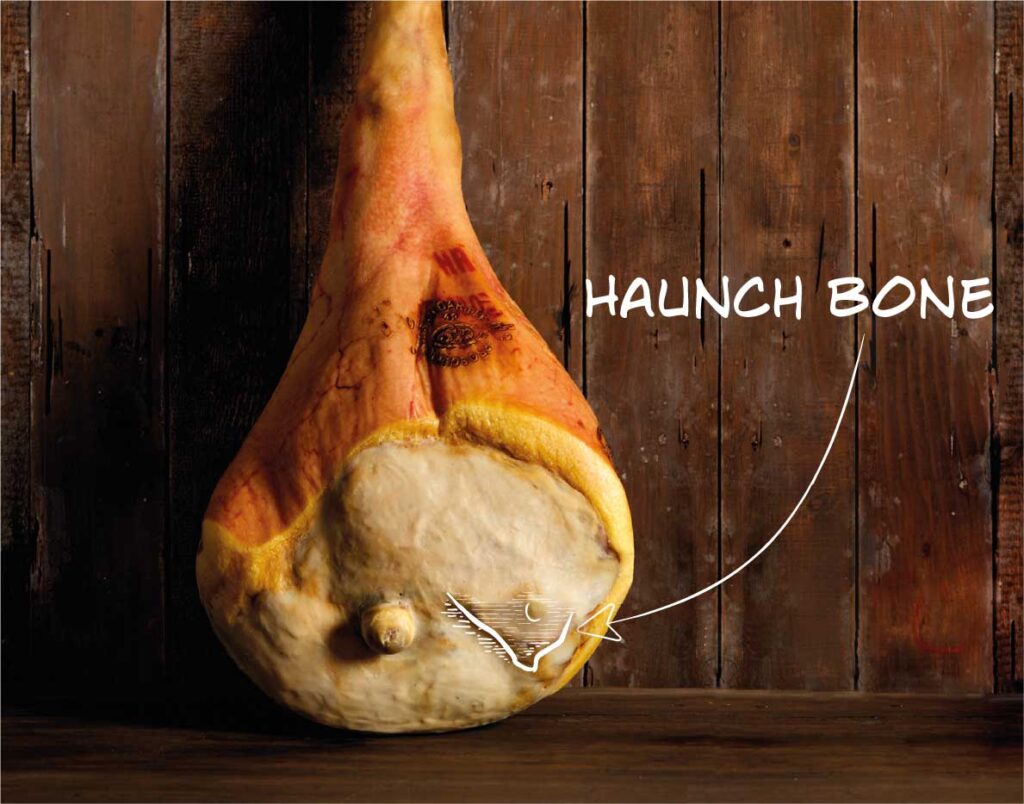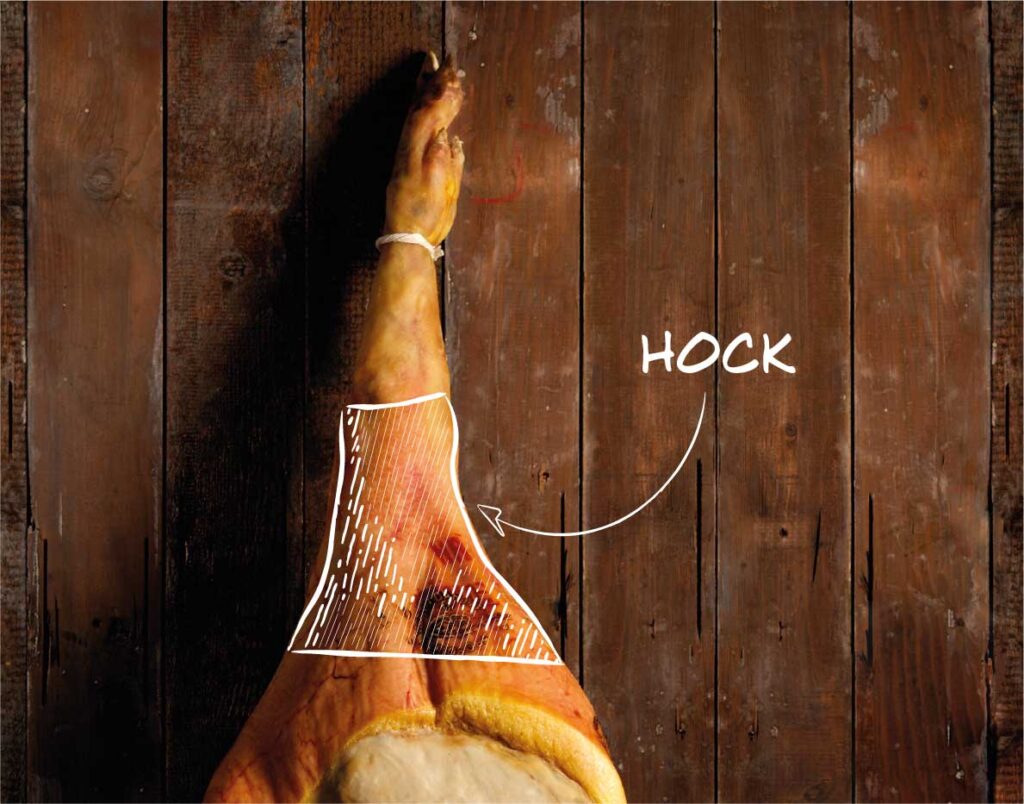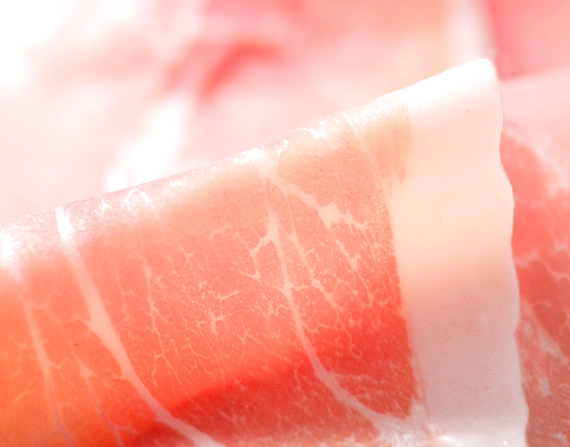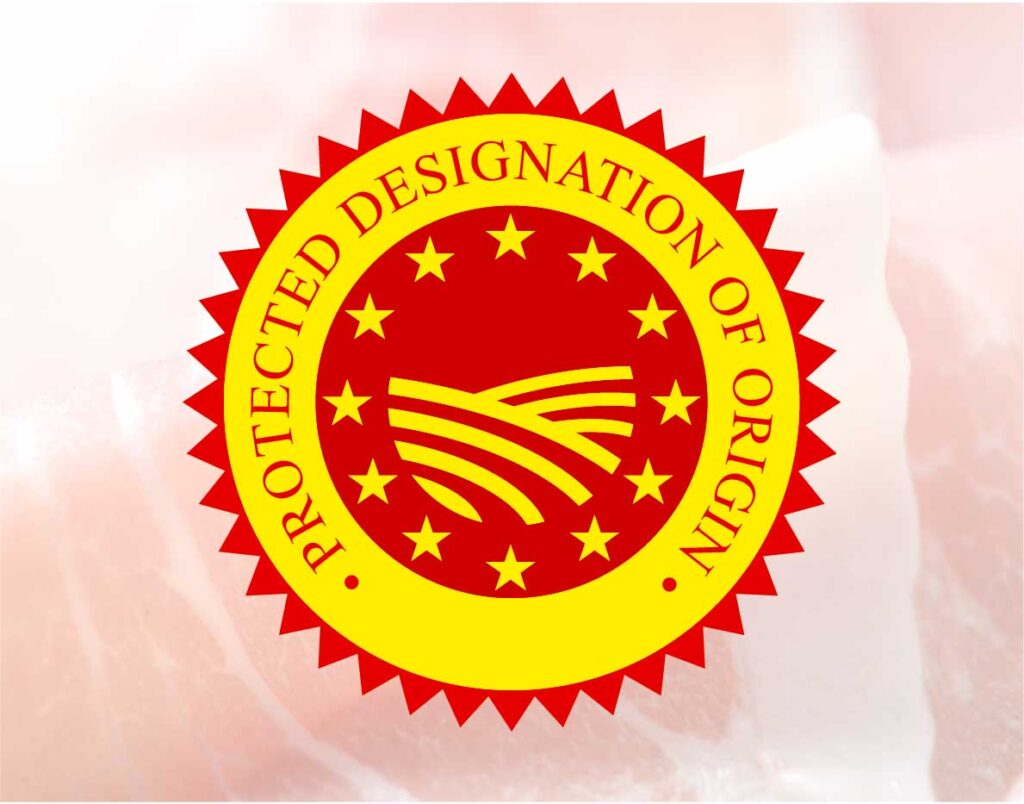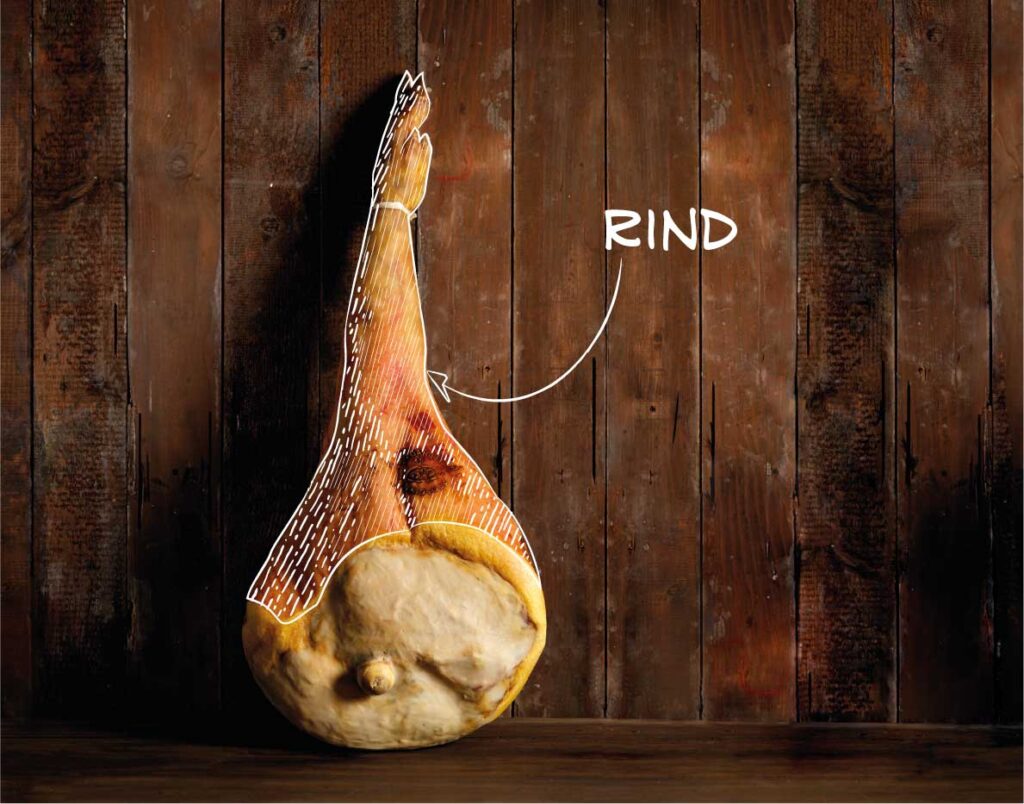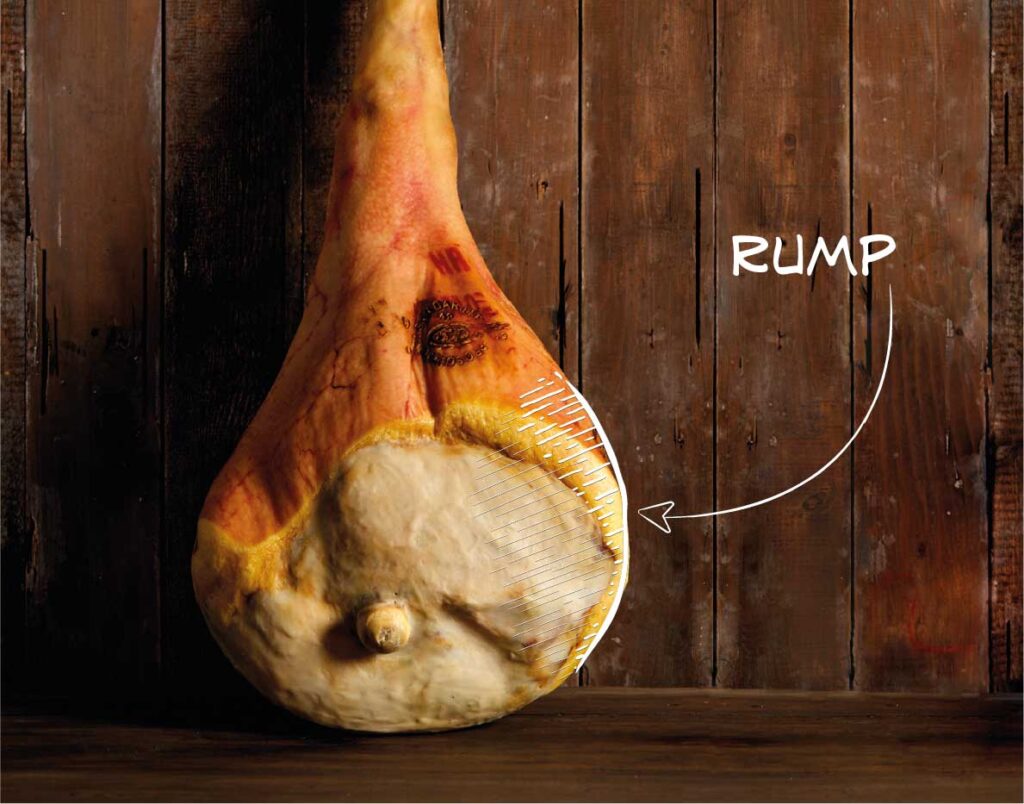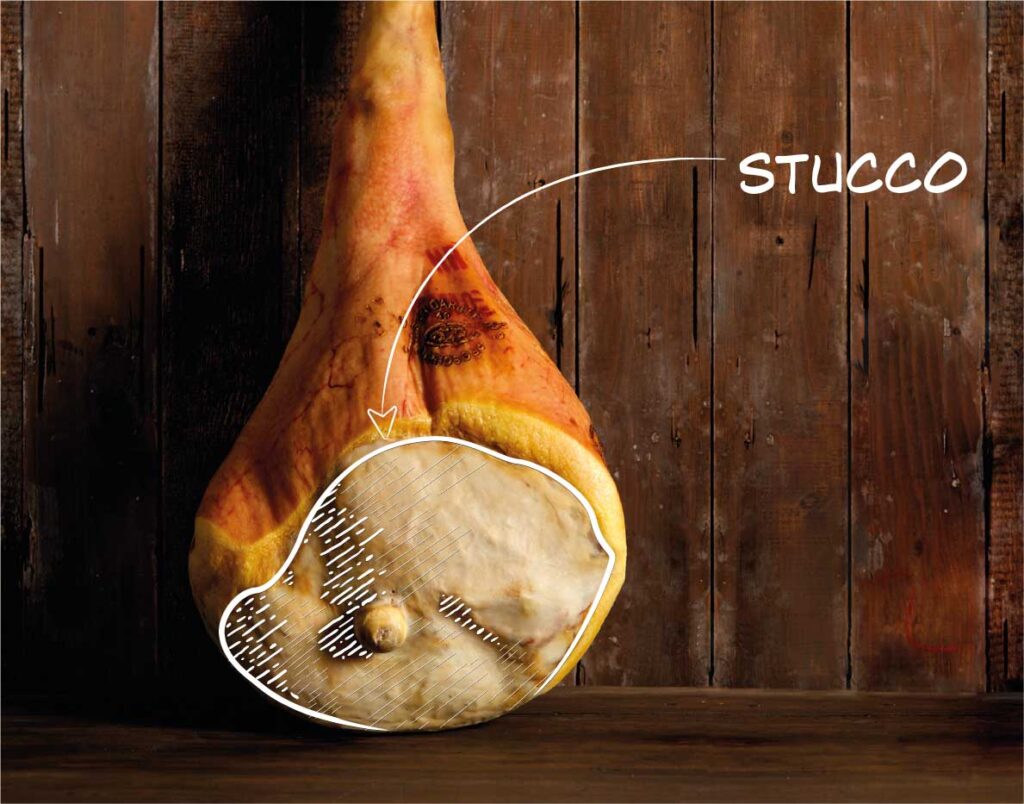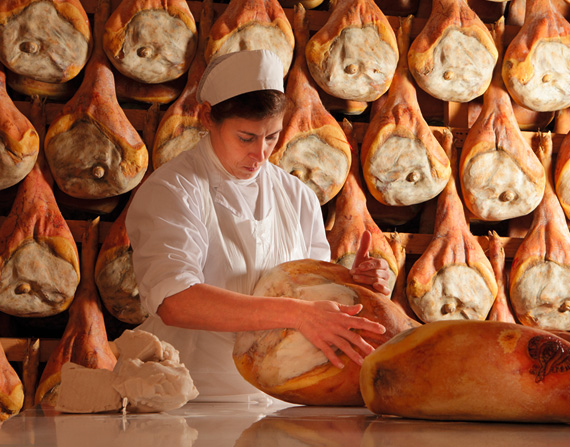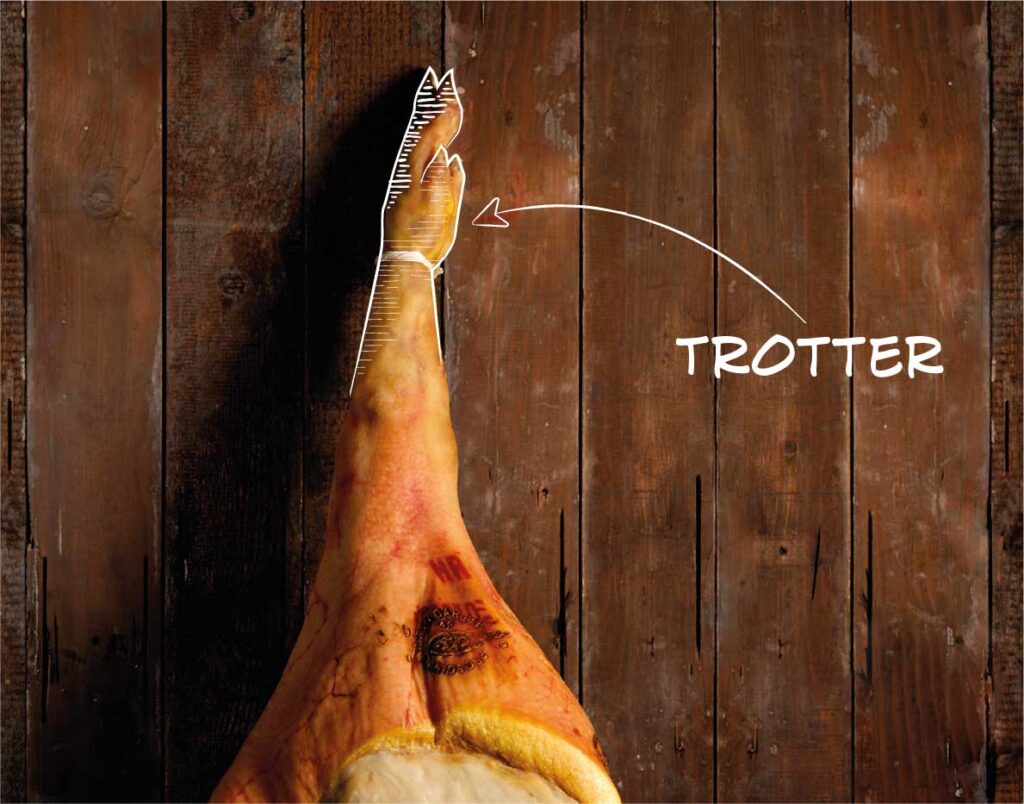The art of slicing prosciutto
Every Prosciutto di San Daniele requires a long, meticulous process to guarantee the flavour that makes it unique and unmistakable. And then what? Even at home, there are certain rules to help you fully savour it.
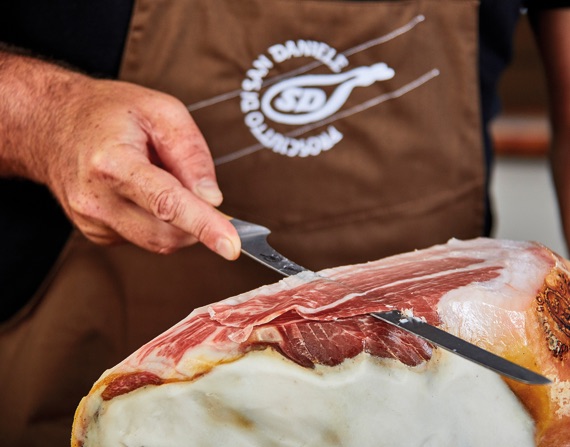
Hand-slicing with a knife
What you need
- a special carving stand to hold it steady
- a carving fork
Method
Use the short knife to remove the rind, the “stucco” and the haunch bone. It is important to remove only as much rind as is strictly necessary, so that the remaining product will be preserved better. More of the rind can then be removed each time you start carving the ham again (progressive removal). Secure the ham into the carving stand, positioning it with the part from which you have already removed the rind upwards. Start carving, always using both hands, one to grasp the carving knife and the other the carving fork. This will enable you to balance your body correctly while carving. The movement of the cut must proceed from right to left (or in the opposite direction for the left-handed), applying a slight “sawing” movement and engaging the whole length of the knife blade, taking care not to press too hard. The thickness of the slices can vary depending on individual tastes. Continue carving until you reach the ham bone, removing the rind and stucco progressively. Once you reach the bone, turn the ham over so that the leaner side is facing upwards, secure it onto the stand again, then continue carving on this side.
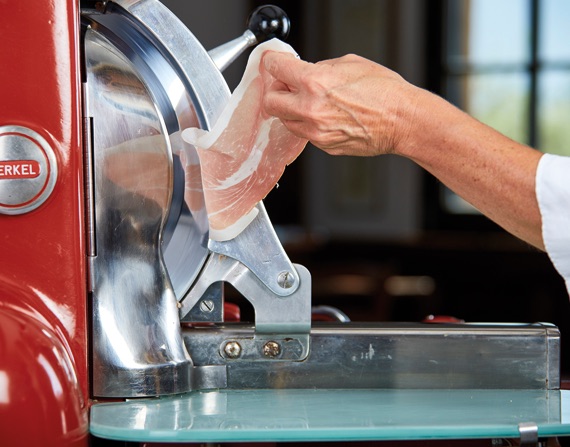
Machine slicing
What you need
– a hand or electric slicer
– a sturdy short-bladed knife for removing the rind
Method
After removing the ham from its vacuum pack, dry it (using paper or a clean cloth) to eliminate the thin greasy film from the surface. Remove the rind from the “fiocco”, which is the leanest and driest part, only in the area intended to be sliced. At this stage it is important not to remove too much of the fat below the rind. This is because in addition to protecting the ham, the fat enhances the way in which the typical flavours and aromas of San Daniele ham are released. Position the ham on the slicer in such a way that the fat surrounding the flesh is uppermost, while the pinkish-red muscle rests on the plate of the slicer. Start cutting. Each time the blade of the slicer reaches the part covered with rind, repeat the process. Slice the whole “fiocco”, then turn the ham round (back to front) and resume cutting from the butt end. The part covered by the surrounding fat must always face uppermost. It is advisable to machine-slice ham after cooling it for a suitable time, so as to make it easier for the slicer to cut the slices sharply.
How to store prosciutto
Over the centuries, our mission has always been to maintain the flavour of San Daniele. Here’s how to properly store it at home.
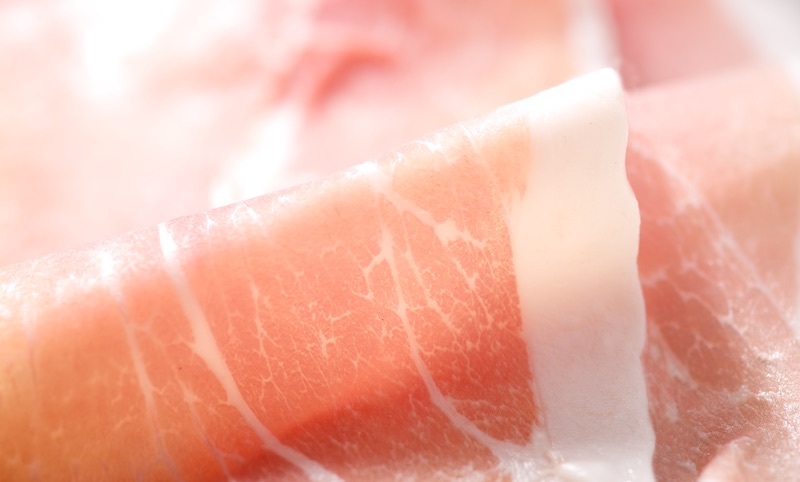
Sliced on the delicatessen counter
Prosciutto di San Daniele sliced on the delicatessen counter must have a good covering of fat (both around the edges and inside the slice) and a delicate pink colour. The storage conditions and the temperature at which Prosciutto di San Daniele is sliced can significantly affect the organoleptic characteristics.
To enhance enjoyment of prosciutto sliced on the delicatessen counter, it is recommended that it is consumed at once, one or two hours after purchase and at any rate within 12 hours, keeping it in the fridge in the meantime at a temperature between +1°C and +7°C.
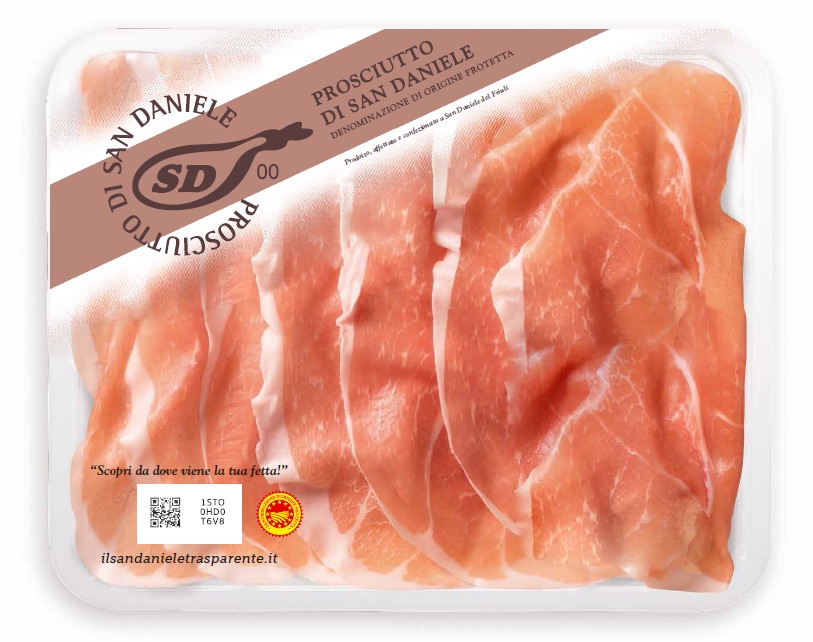
Pre-sliced in trays
These packs are kept in the fridge, at a temperature between +1°C and +7°C and opened 5/10 minutes prior to consumption.
The maximum storage time for sealed trays kept in the fridge – always shown on the packaging – is 120 days.
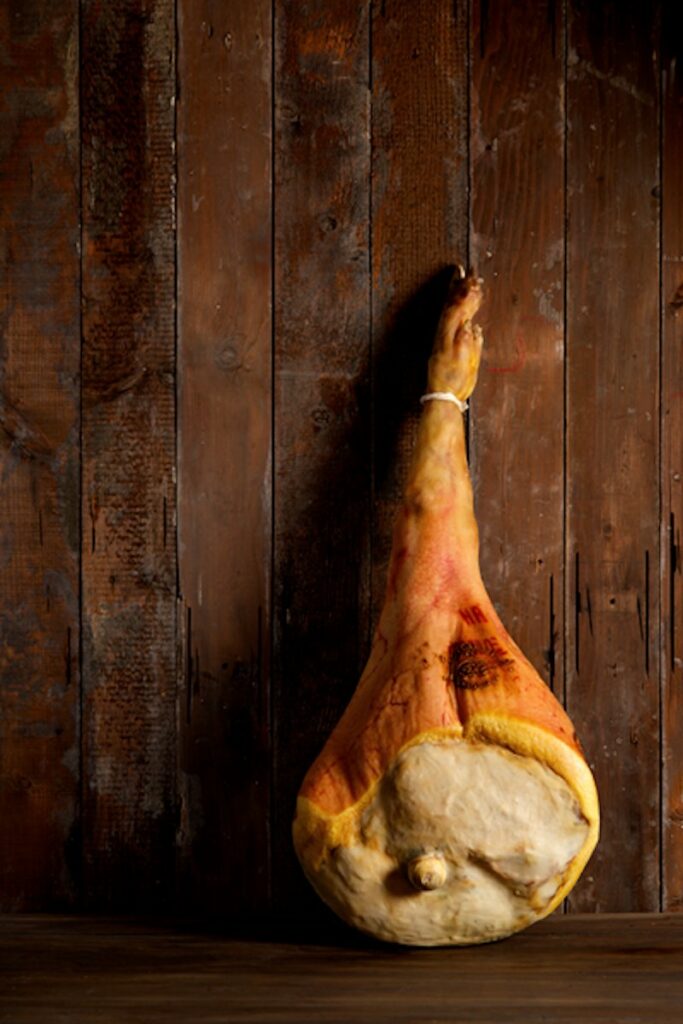
Whole on the bone
The prosciutto must be kept in a cool, dry place (or at room temperature, from 15 to 20 °C) until use. After the prosciutto has been sliced, the exposed part must be covered with transparent film and the product replaced in the fridge.
After putting the prosciutto in the fridge, it is advisable to consume the product within a maximum of one month. When you start cutting the prosciutto again the first slice should be discarded, since as it is on the top it tends to oxidise and dry out excessively.
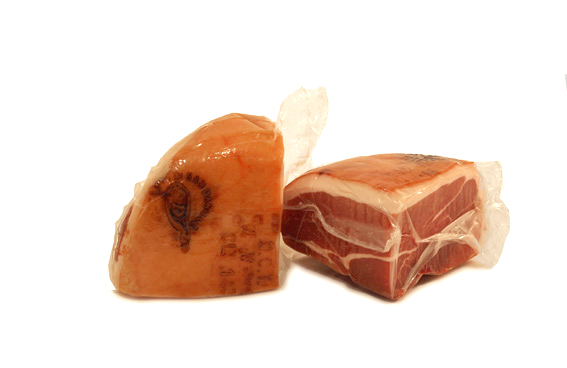
Deboned whole or in portions
After removing the prosciutto from the vacuum packaging, you must:
- Cover the outer cut part with transparent film;
- Wrap the entire prosciutto in suitable material (film, disposable paper), to avoid the absorption of other odours;
- Replace the prosciutto in the fridge at a temperature between +1°C and +7°C
The ideal would be to divide the deboned prosciutto into two or three portions and vacuum-pack these. The use of vacuum allows the fragrance of the prosciuto to be preserved for longer. It is important to always discard the first outer slice before continuing to slice the prosciutto.
A QR code for discovering the origin of the San Daniele prosciutto packs
In June 2019, we implemented a digital tracing system which is applied to each pack of pre-sliced prosciutto, enabling consumers to access an immediate, easy-to-use tool which allows them to discover the details of the production chain. Each pack has a unique QR code, which allows consumers to access a range of certified information about the origin of their product via smartphone:
- Origin: 100% Italian
- Duration of curing
- Slicing date
- Ingredients
- Weight
- Curing location
- Slicing location
This technological innovation ensures the transparency of the prosciutto di San Daniele PDO production chain.

